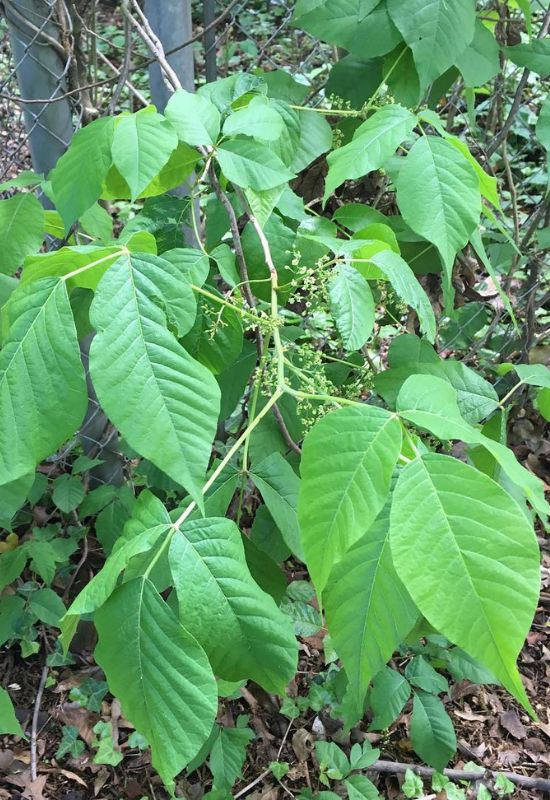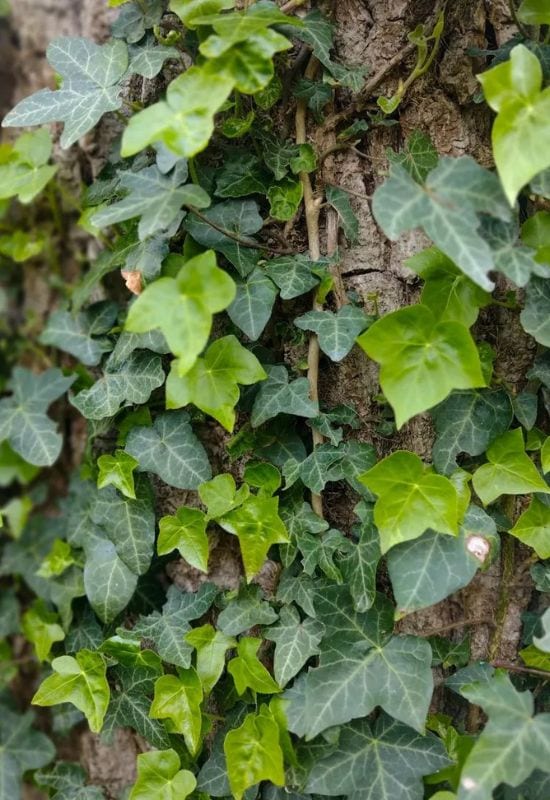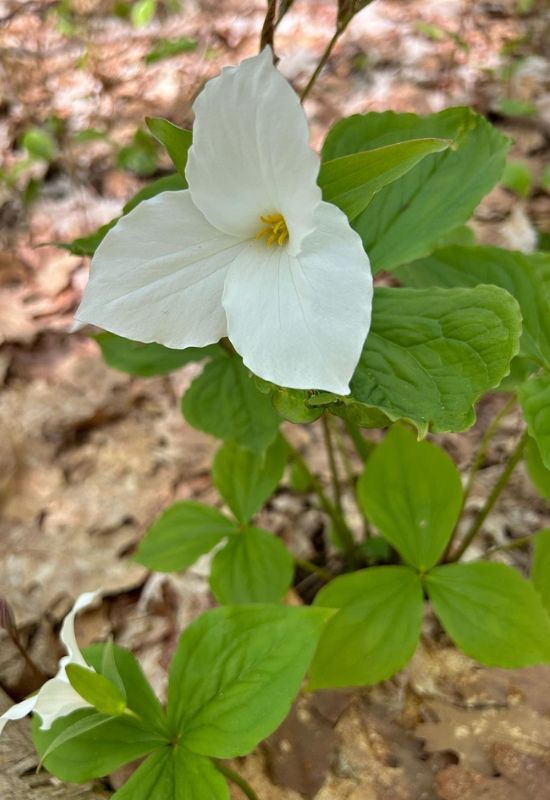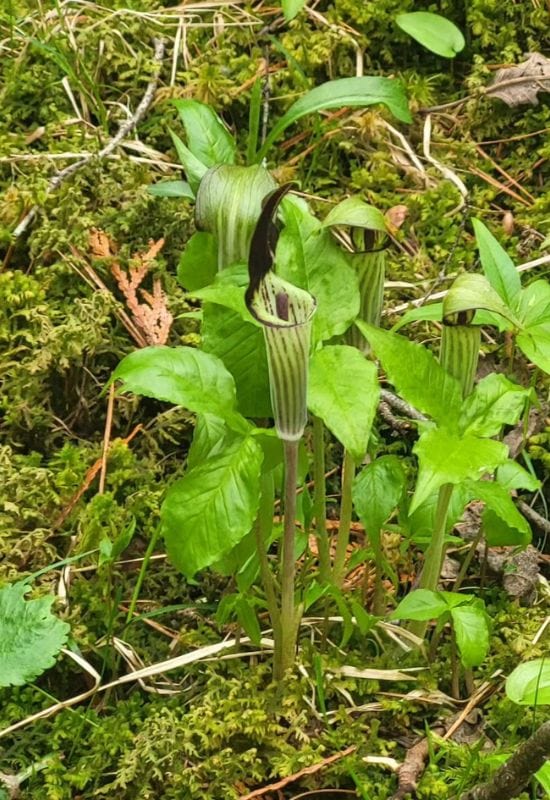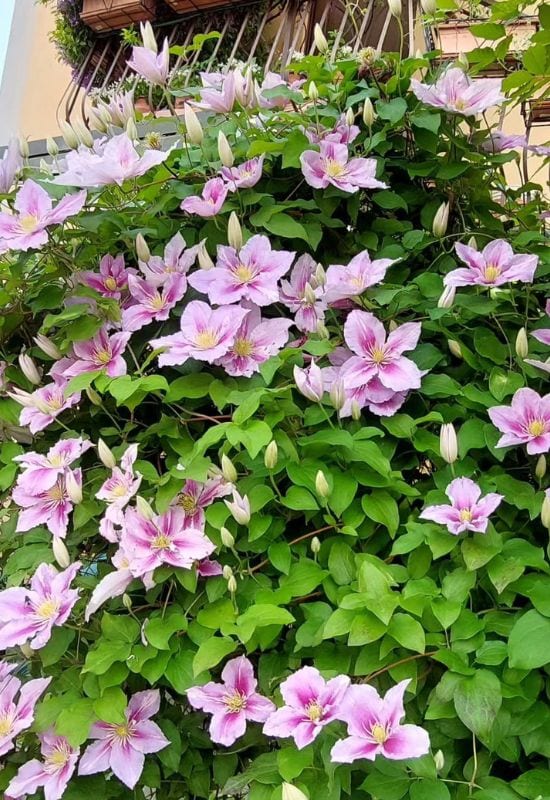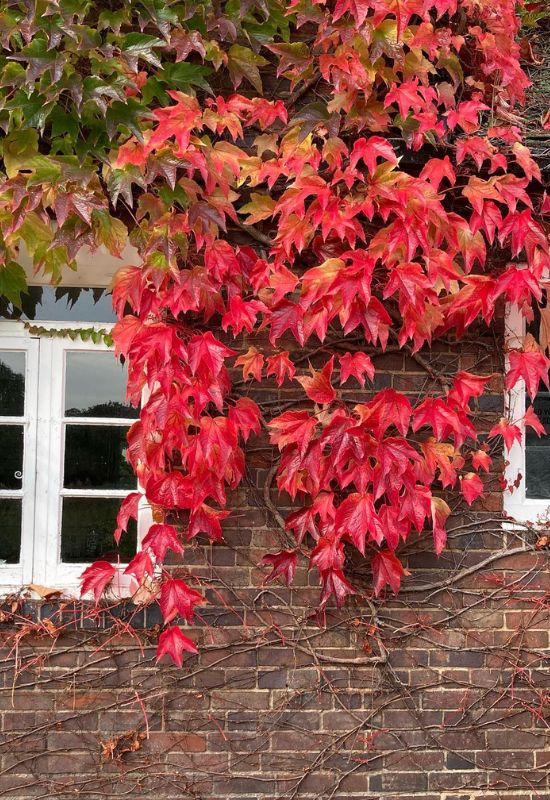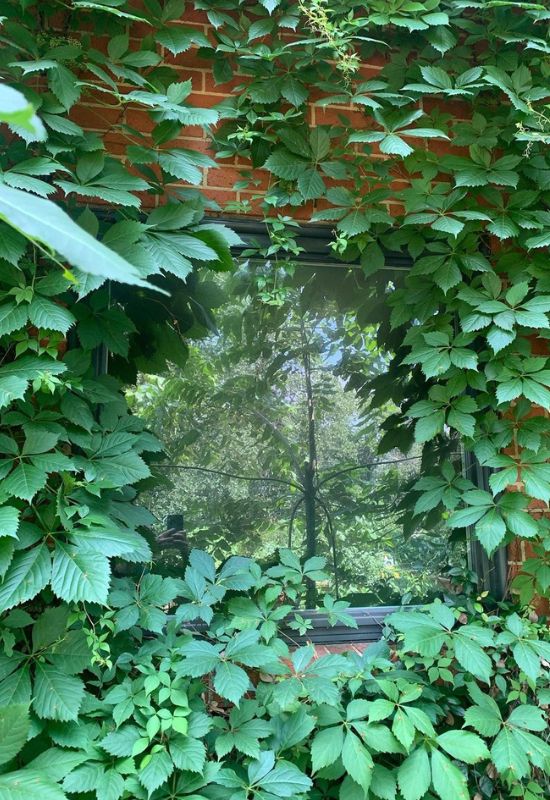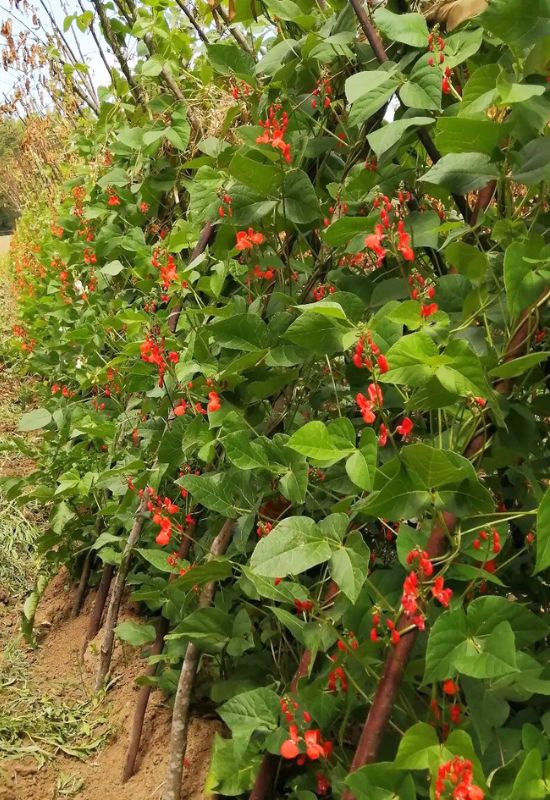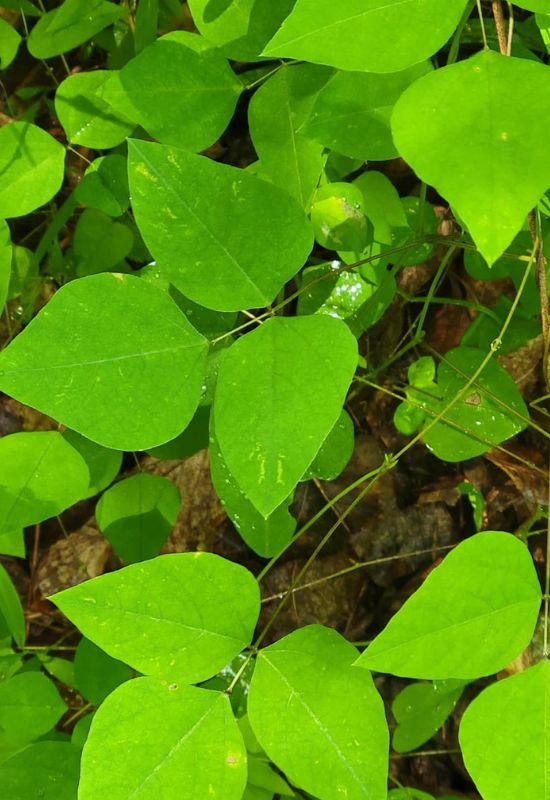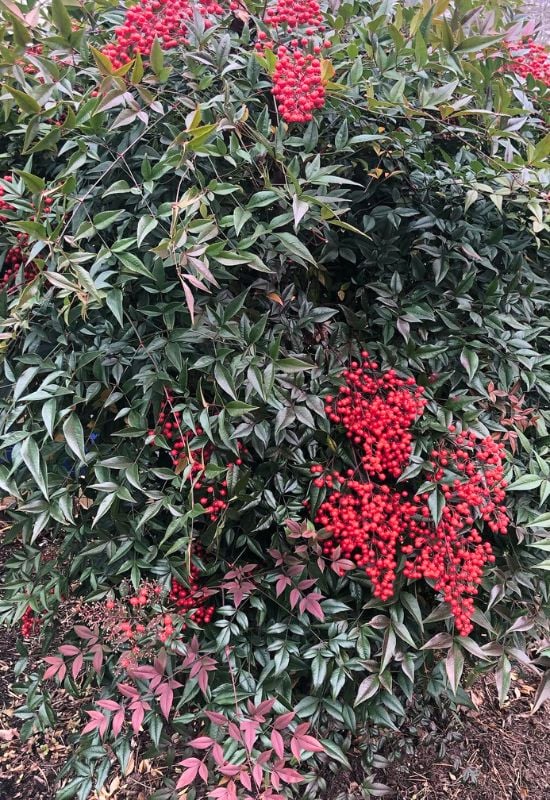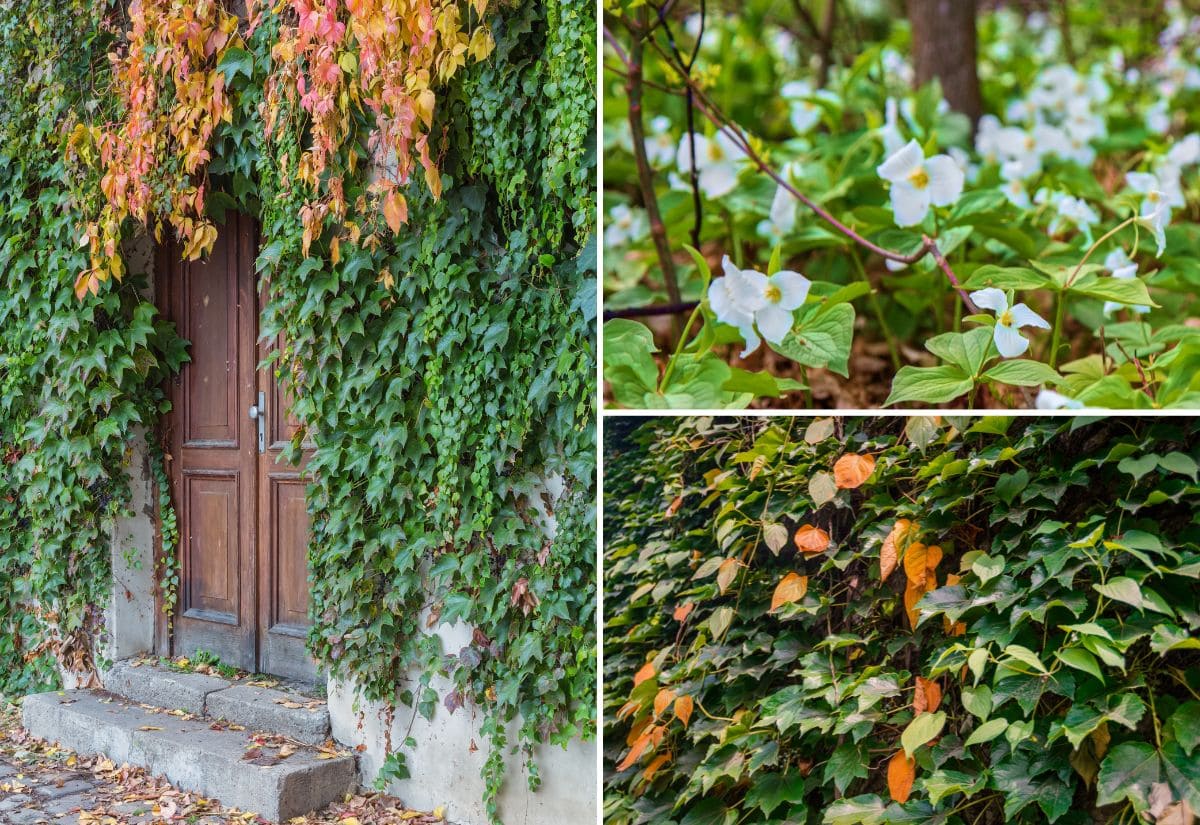
Poison ivy, what’s in a name? A lot, in this case! The small shrubs or climbers of the genus Toxicodendron are easy to confuse with real ivy (Hedera spp.) as well as with other species, and this can be quite risky. Common in the underbrush of the USA and Canada, in fact, this woody perennial can give you a very bad rush just touching it, and in some cases, and it can even be fatal!
So, it’s best if you can identify poison ivy as well as lookalikes, and for many reasons. One, of course, is your safety, and especially that of your children. This is especially true if you live where Toxicodendron is endemic. But also in case you see this beautiful plant and you want to take a cutting to grow in your garden…
What’s more, poison ivy does have its own attraction, so, maybe you want a similar variety with lovely leaves in three parts to have on your land, but you want to make sure that it won’t hurt you…
For this reason, we will learn how to identify poison ivy correctly, but we will also see plants similar to poison ivy, but safe to touch – so you can recognize them and even grow them instead of the rush inducing Toxicodendron.
Of course, first of all we need to identify our protagonist correctly, in order to be safe, so we will start with the infamous (but pretty) poison ivy…
Poison Ivy Identification: Common Lookalikes and Key Traits
Where poison ivy grows natural, there is a simple way to identify it for safety reasons, expressed in a saying: “leaves of three, let it be!” Popular culture always knows how to put things simply, but this does not tell us the whole story…
To start with, not all the species of Toxicodendron are real poison ivy… But all the r of this genus are irritant to the touch. Toxicodendron radicans is the most common, especially in the USA, followed by Toxicodendron rydbergii, or western poison ivy. But don’t be deceived by its name; it also grows in states on the East Coast, especially north of New England.
Toxicodendron radicans can be both a shrub and a vine, while Toxicodendron rydbergiiis only a shrub, and never a vine.
The third species is less common and native of Asia, Toxicodendron orientale, and it only grows in China, Japan, Korea, Taiwan, Kuril Island and Sakhalin, though it has been introduced in Uzbekistan.
Now, let’s see how you can tell poison ivy apart from similar plants…
Poison Ivy Leaves
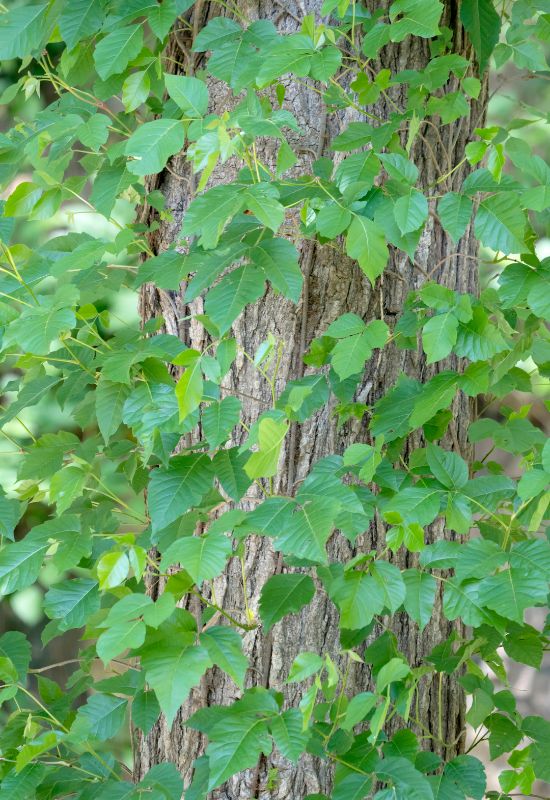
The easiest way to identify real poison ivy, or Toxicodendron spp., is by its leaves. They are technically called pinnate, which means that each petiole has more leaflets, clearly distinct, and in our case, there are always three.
Leaves are always almond shapedin Toxicodendron radicans, the most common variety veined and light green when young. They are semi glossy and they turn dark green as they mature, then reddish in fall. Each leaflet can be between 1.25 and 4.75 inches long (3.0 to 12 cm), but occasionally, they can reach 12 inches (30 cm).
But Toxicodendronrydbergii, or western common ivy, can be more deceitful… they can vary a bit in size and shape. They can have smooth edges or be sinuous, for example, but they are always veined and shiny. The veins can vary in color, usually red in spring and multicolored during the other seasons.
The leaflets can reach 6 inches long (15 cm) and the one in the center is usually longer than the other two. Also, the two lateral leaflets are usually asymmetrical, while the central one is symmetrical. The color is rich green, but it turns orange and yellow in fall.
Poison Ivy Flowers
The flowers of Toxicodendron radicans are small and inconspicuous; they appear in May to July and they are male and female. The blooms are yellowish greenish, and they open in small clusters about 3.3 inches above the foliage (8.0 cm).
In Toxicodendron rydbergii, the small flowers are cream in color, they appear in June to July and they blossom in cone shaped clusters at the base of the leaves.
Poison Ivy Fruits
Like most flowering plants, poison ivy also produces fruits, or, technically speaking, drupes, which, of course, are not edible at all! They too are irritant!
The berry like drupes of Toxicodendron radicans mature between August and November, and they are whitish to grayish in color. The fruits of Toxicodendron rydbergiiare ribbed and they look like dry peas in shape and size, and they can be white, brown or yellow.
Poison Ivy Size
Poison ivy is a small plant, so which is quite useful when you need to identify it, and, for example tell it apart from tall real ivy varieties… Toxicodendron radicans grows to a maximum of 4 feet tall (1.2 meters) as a shrub and up to 6 feet as a vine, climbing on trees (1.8 meters).
Western poison ivy is smaller; it reaches a maximum of 4 feet in height (1.2 meters).
Other Poison Ivy Characteristics to Identify It
The most common of the two varieties of poison ivy, Toxicodendron radicans, when it is a vine, also produces adventurous roots and aerial rootlets, and it can spread growing rhizomes.
This does not happen with western poison ivy. And now you have all the facts to identify real poison ivy, there remains only one question to answer…
Why Is Poison Ivy Irritant?
Real poison ivy, as well as all the plants in the Toxicodendron produce a substance in their sap which is called urushiol, which is a strong irritant, but it can also give you a strong allergic reaction, on top of a bad rash with scratchy blisters. This, in some cases, can even be lethal!
And a last tip: never pick up a poison ivy leaf from the ground, even if it is dry! Urushiol can remain active in them even for years!
Ok, now you know everything about real poison ivy, let’s see some safe lookalikes for your garden…
12 Plants You Can Confuse With Poison Ivy – Or Grow Instead
So, let’s see which plant varieties look like the “real deal”, poison ivy, which are safe for you, your garden, your children, and your pets too!
Here are 12 that plants look like poison ivy, but none will give you a bad rash if you touch it.
1: English Ivy (Hedera helix)
Of course, the first species that springs to mind is English ivy! This vine does not only share a name with poison ivy, or Toxicodendron, it also looks like it, but… The leaves are not rally the same, to start with.
Our innocuous climber has lobed evergreen foliage not pinnate. It is the one lead with three points, not three distinct leaflets. They are glossy, but the veins are only “painted on”, not in relief… You could confuse them when Hedera helix is young, but not when it is mature, as it can reach 30 feet tall (9.0 meters)!
It is only a vine and it blossoms in fall, with little greenish white flowers, followed by berries that can be yellow orange to red. And, of course, it is not poisonous or toxic at all!
English ivy is a safe vine to grow in your garden, to give it that established and traditional look we all crave for in green spaces, draping over walls and structures, or even as ground cover. But make sure it clings to something strong, because it can become quite heavy, and keep it off trees, as it can damage them.
2: White Trillium (Trillium grandiflorum)
Most trillium varieties look like poison ivy in many ways, but we picked one, white trillium, because it is the most similar, and also because once you identify, one, you can recognize all the others.
But there is another reason, which you will find out soon… The leaves are what may really deceive you: they are in groups of three, elliptical and pointed, and bright to mid green, and glossy.
Each being 3 to 4 or sometimes 5 inches long (7.5. 10 or 12.5 cm), they can really trick you. However, they look soft and the veining is deep and lengthways. These small perennials also grow in similar shady habitats as Toxicodendron, forming carpets of lush ground cover.
However, as soon as you see the flowers, which start in mid spring, you cannot be confused! The large blossoms, about 4 inches across (10 cm), are white, with three recurved petals and a golden center! Very showy indeed, and in fact this species has won the Award of Garden Merit by the Royal Horticultural Society.
Ideal for planting under shrubs or as ground cover in shady areas, white trillium has sisters in other colors too, like red trillium (Trillium erectum) the yellow wood lily (Trillium luteum) the dark purple prairie variety (Trillium recurvatum), the chocolate variegated toadshade (Trillium sessile) or the almost black giant wake robin (Trillium chloropetalum var. giganteum)are just some of the choices you have. And they are all safe!
3: Strawberry (Fragraria spp.)
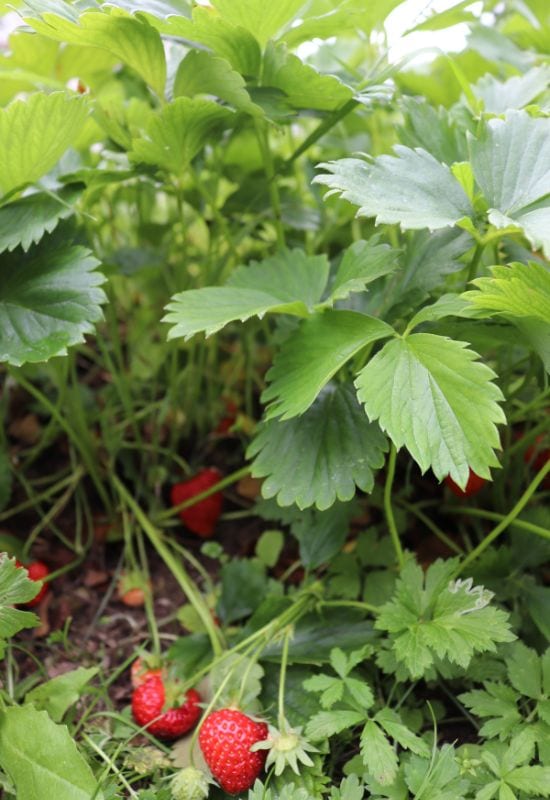
Never confuse little strawberry plants with poison ivy! Of course, one gives us delicious fruits, the other a bad rash if we are lucky! However, the foliage can be similar and wild varieties can grow in shady underbrush, just like Toxicodendron…
The leaves are three partite, just like those of the irritant vine or shrub, but smaller, bright green and pleated. They are always serrated too. The blooms look like little single roses (and they belong to the same family, Rosaceae), white and with 5 round petals.
They usually bloom in May and June, but now there are cultivars that keep going till late summer. Of course, the fruits are easy to recognize, with their beautiful heart shape, vivid red color, and amazing smell and taste. Soe can be massive, but the very best are quite small… Experts say the best is ‘Florence’ and – having grown it and tried it – I agree! It is just sublime!
Strawberries will grow in vegetable gardens or containers very well, but there is no reason why you could not mix it in with other plants in beds and borders, and wild varieties can work well even as ground cover, under shrubs and trees.
4: Jack in the Pulpit (Arisaema triphyllum)
Here is another small perennial that you could confuse for dangerous poison ivy, but, despite its look, it is not! Of course, it is the foliage that can lead you into this mistake… This shade loving plant only produces two leaves, and they are divided into three leaflets, with clear veins, semi glossy, and so very similar to those of Toxicodendron…
However, if you look closely at where they meet, they are not fully divided. They are not pinnate, but rather palmate and very deeply lobed. The petioles too are soft, and there is no woody part to be seen.
Then again, when it blossoms, it may look very menacing, but no way you could take it to be the irritant vine! They look like pitcher plants, or cobra heads, and even scary, but innocuous. In fact, it is a spathe (called “pulpit”) with a hood, and it has lovely stripes of green, purple and cream. Inside, it hides a green and purple spadix, amicably called “Jack”.
Jack in the pulpit is an ideal exotic underbrush variety for temperate and even chilly climates, surprising with its appearance and yet very easy to grow and it can even naturalize in woodland gardens!
5: Clematis (Clematis spp.)
Clematis and dangerous poison ivy do have so e similarities, when the former is not in bloom, of course! Clematis is in fact a vine, though it grows much taller than Toxicodendron, and the foliage…
It has the strange habit of having leaves of different shapes, but most are three partite, sometimes, smooth, and sometimes grooved. When young, you could confuse the two species.
But as soon as it grows and it produces its showy and exotic looking flowers in all shades of white, blue, purple, pink, red or rarely yellow, you will be certain that you have grown an amazing ornamental and flowering beauty in your garden!
The blooms can be up to 8 inches across (20 cm), though most stop at 5 or 6 inches (12.5 or 15 cm). The star shaped and fluffy seed pods that follow are also very r!
Yet another shade tolerant lookalike of poison ivy, clematis is a safe and ideal, low maintenance but highly rewarding climber for pergolas, trellises, fences and walls with exotic blooms. Do make sure that the roots stay fresh to have great floral displays!
6: Blackberry (Rubus fructicosus)
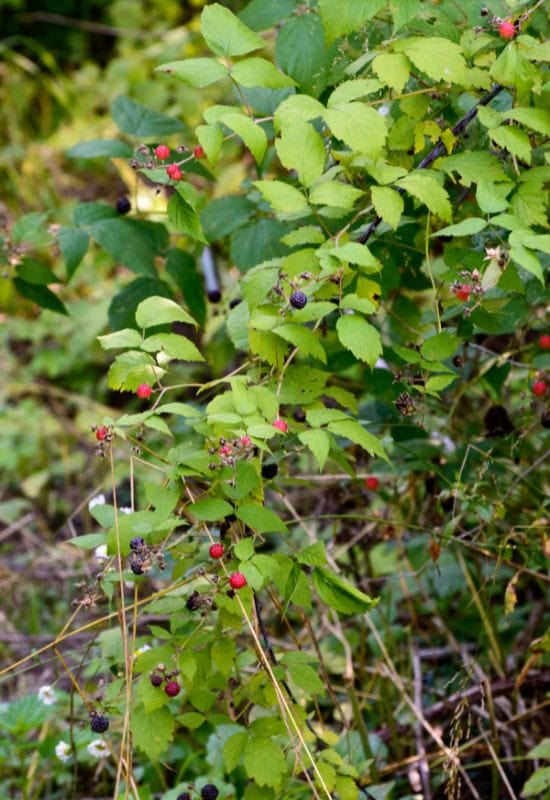
Blackberry, or bramble, can grow wild on roadsides and you could mistake it for poison ivy, but only when it is small, and if you don’t look closely. Yet again, it is the foliage that can be misleading; the leaves of this rambling shrub are deep green when mature, light when young, in three parts and veined.
But, to start with, they are not glossy and they tend to be a bit broader in comparison, though not always, and sometimes even heart shaped. They are also smaller, each leaflet usually reaching about 3.3 inches long maximum (8.0 cm).
But look at the petioles and canes and you will soon find out it is no Toxicodendron you are looking at! The thorns are a giveaway, actually prickles if you want to be technical. But there are now cultivars without them, so, look at the white flowers with five rounded petals and you can be sure.
Alternatively, wait for the berries to appear first in red, then ripening to black, and you are left with no doubt. Oh, no, they are not berries, they are aggregates of drupelets, again, if you really want to be technical…
Blackberries can be very invasive indeed, but you can grow them for their fruit, or to keep intruders away as natural fences, but also as great corridors for wildlife… Do cut them back heavily if necessary.
7: Boston Ivy (Parthenocissus tricuspidata)
Boston ivy is not real ivy and it is not poison ivy! Nor is it from Boston! If this has confused you, let me explain…it is indeed a fast growing and deciduous climber from China and Japan, but its foliage reminds us of Hedera and Toxicodendron… Mystery solved?
Well, you can certainly tell it apart from the toxic vine or bush because they have three lobes, and not three leaflets: you can clearly see that the glossy green leaves you are looking at are a whole, and sometimes they are even ovate!
They will blush to beautiful colors in fall, with dark pinks, wine red, and orange before they fall. It is also very much bigger than poison ivy, up to 50 feet in height (15 meters!) and it reaches it very quickly.
It does flower, in spring, with small greenish white blooms, and this may remind you of Toxicodendron radicans, but they come near the leaves, even hidden by them… They are followed by shiny black berries that persist till late summer, unless birds eat them. Another sign that it is not a toxic variety!
Grow Boston ivy as groundcover or to drape walls and fences, because it really produces very dense foliage that coats large surfaces and in a very short time, even in deep shade, and it requires very little maintenance.
8: Raspberry (Rubus iadeus)
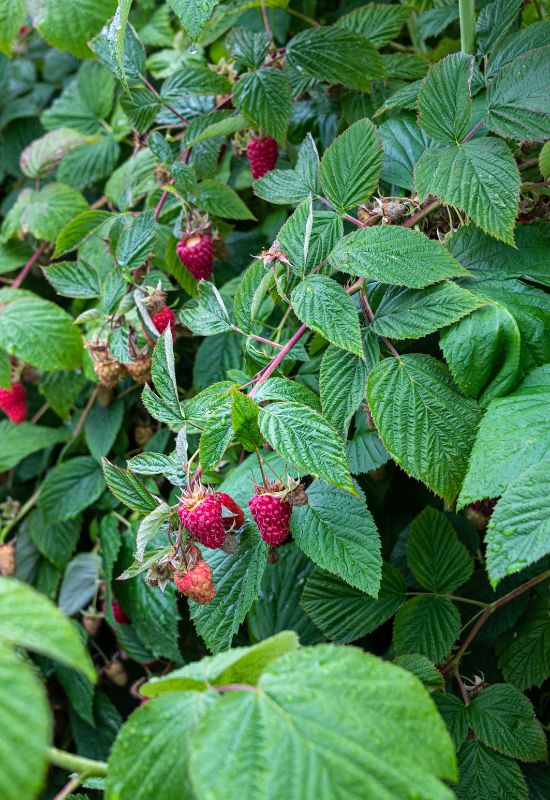
Yet another shrub that loves to grow in the dappled shade of trees, sometimes spontaneously, and with wary looking leaves is raspberry. Yes, the one that bears the fruits we all love!
A very close relative of blackberry, it is less invasive and endemic, and also usually smaller, up to 8.3 feet at the very maximum (2.5 meters) and with woody and upright stems. The leaves are three pinnate, deeply veined and green, however…
While you can get them in groups of three leaflets, it often has five: it is a relative of the beautiful rose, in fact. And the flowers too remind us of this, white, with five slender petals and about 0.4 inches across (1.0 cm) and they start coming in May or even later.
New shoots are simple and single, while older ones branch out in their second year. But of course, it is the fruits (again, not berries but aggregates of drupelets) that we are interested in and that will remove all doubts! While there are orange varieties, they have a color we can all recognize, because it is called “raspberry” after them, and a flavor…
Raspberry bushes are great as inner hedges in gardens; they crate rooms, as landscape designers call them and they are easy to grow, not very tall but fast… What’s more, no passer by will take advantage and pick its fruits while you are not on the lookout!
9: Virginia Creeper (Parthenocissus cinquefolia)
Virginia creeper is another ivy like climber that you may wrongly identify as Toxicodendron. However, by now you will be able to spot the differences, because you have had quite a bit of practice…
Look at the dense deep green foliage and you will soon notice one difference: the leaves are pinnate, like poison ivy, but each has five leaflets!
This is easy to find, so, your confusion won’t last long… They too blush to amazing shades of orange, red and purple, when this plant is possibly at its best and most decorative!
What’s more, among this display of warm colors you will find round blue berries with a thin veneer of icing on them, which look very appetizing, but you should leave them to visiting birds, because they are poisonous to humans and dogs…
The flowers are small, greenish white and they usually hide behind this curtain of green in early summer. A final surprise will come in spring, when you will see bronze tonalities glistening on this amazing vine.
Equally suitable to climb up walls and fences as to grow as ground cover, you need to be careful with its adhesive tendrils, that can ruin plaster, concrete and bricks. Be wise and grow it on a trellis…
10: Bean (Phaseolus vulgaris)
You really don’t want to confuse bean vines with poison ivy! But again, in the wrong place and circumstances, you may. And the reason is always the same: the leaves of beans are three partite, fully pinnate, and they come in groups of three pointed leaflets.
But they are broader and almost heart shaped, fairly smooth and tender looking, bright green when young and then deeply veined and darker as they mature. However, the humble bean is an annual and it does not produce any woody parts.
The flowers are quite attractive, and they could have a decorative value: usually pink and purple or lavender in vegetable varieties, but there are some in white, yellow or red as well. Yes, they do have some decorative value when they come, about two months after planting.
You can even stagger them, sowing your plants at different times. Of course, you will soon recognize the long and green (but also white and red, or other colors) pods with edible seeds as soon as they come!
True, beans are mainly a vegetable, but if you want to grow a few on trellises and you have a liking for edible gardens. They grow fast, their foliage is fresh looking (and not poisonous, above all!) and both blooms and pods are pretty and colorful.
11: American Hog Peanut (Amphicarpea bracteata)
Here is a tricky one for you: American hog peanut! This vine really looks like poison ivy, and it grows spontaneous in the same regions and habitat… The leaves are in three parts, deep green and with veins in white to brown.
They always have smooth edges, though, and they are usually smaller than those of Toxicodendron (up to 3 inches long, or 7.5 cm). But this is not enough to be safe… You will need to wait for the flowers to make sure that it is not dangerous for you, in July, and they will stay on till September.
The blossoms come in clusters of elongated pea blooms about ½ inch long (1.2 cm) and blue or lilac but with a white sepal enclosing part of them, or fully white. Then the seed pods come, they are flat 1.5 inches long (4.0 cm), shaped like a crescent, and here too we have a puzzle: those at the base of the vine are edible, the ones on the upper part are not!
This native vine of North America is not a common garden variety, but being adaptable to shady places, and often spontaneous, you can grow it for decorative purposes in poorly lit gardens, or it may just crop up and you may wish to know what to do with it…
12: Heavenly Bamboo (Nandina domestica)
Nandina domestica is yet another deceptive shrub: it is heavenly, true, but not a bamboo variety, and it does look like poison ivy! This evergreen native of China, Japan and India has pinnate leaves, and sometimes they have 3 leaflets, sometimes more.
They are up to 3 inches long (7.5 cm) and leathery, pointed and with smooth edges. The color changes a lot according to sunlight and the season, from bright green to dark, but also red, purple copper and yellow.
It does not grow tall, which makes it similar in size to Toxicodendron radicans in bush form, but… The panicles of white and star shaped flowers that appear in late spring will start putting you into the right direction.
And you will certainly identify it once the super shiny red berries follow, and they persist into the winter. They are not edible to us, but at least they are not poisonous to us! They are to animals, though…
Heavenly bamboo is a popular garden plant but it can become invasive. It is excellent in woodland gardens borders and for foundation planting that is to its colorful displays, and there are sterile varieties that won’t reproduce. Unfortunately, they won’t even flower or fruit…
Finally Safe With Poison Ivy Lookalikes!
So, you can finally recognize dangerous poison ivy correctly, and be safe from it. But now you don’t need to renounce having three partite pinnate leaves, which are quite decorative, in garden, especially in shady places, under trees or by walls…
With plants that look like Toxicodendron but will not hurt you to the touch, you can have the best of both worlds, and even more… And even if one crops up by mistake in your yard, you can now identify it and, in case, keep it!

Written By
Amber Noyes
Amber Noyes was born and raised in a suburban California town, San Mateo. She holds a master’s degree in horticulture from the University of California as well as a BS in Biology from the University of San Francisco. With experience working on an organic farm, water conservation research, farmers’ markets, and plant nursery, she understands what makes plants thrive and how we can better understand the connection between microclimate and plant health. When she’s not on the land, Amber loves informing people of new ideas/things related to gardening, especially organic gardening, houseplants, and growing plants in a small space.

